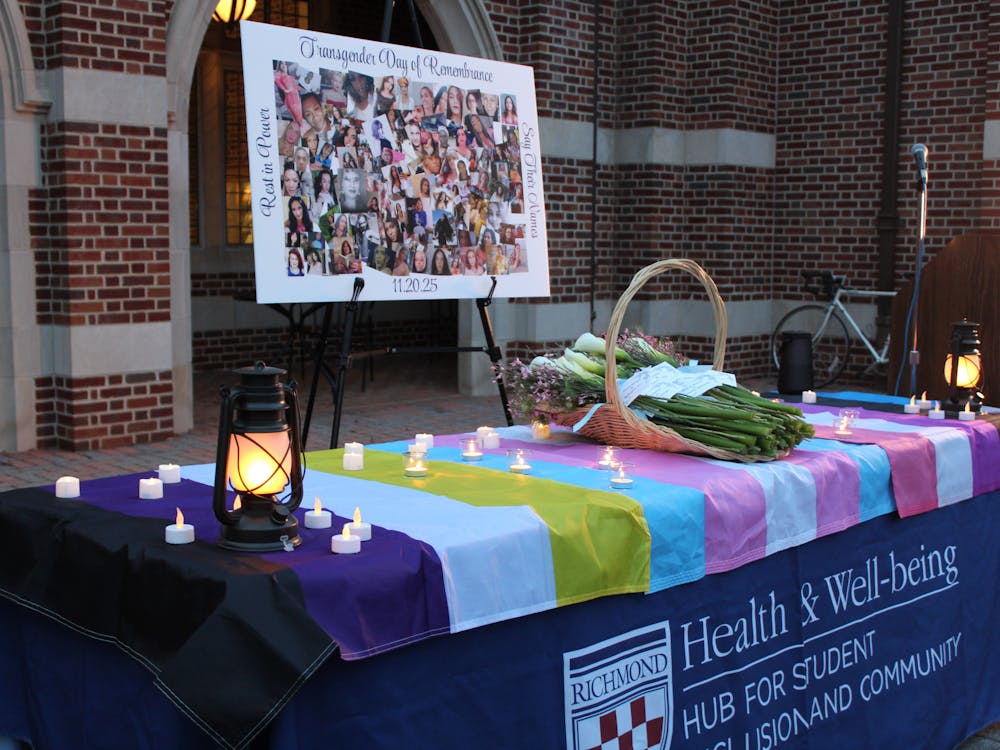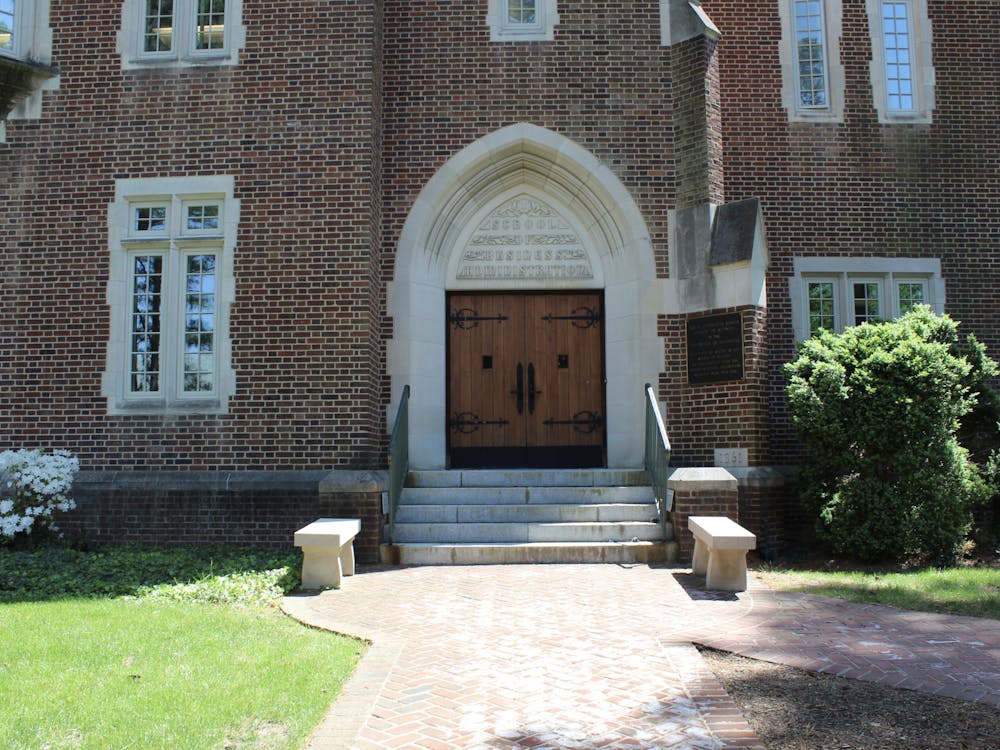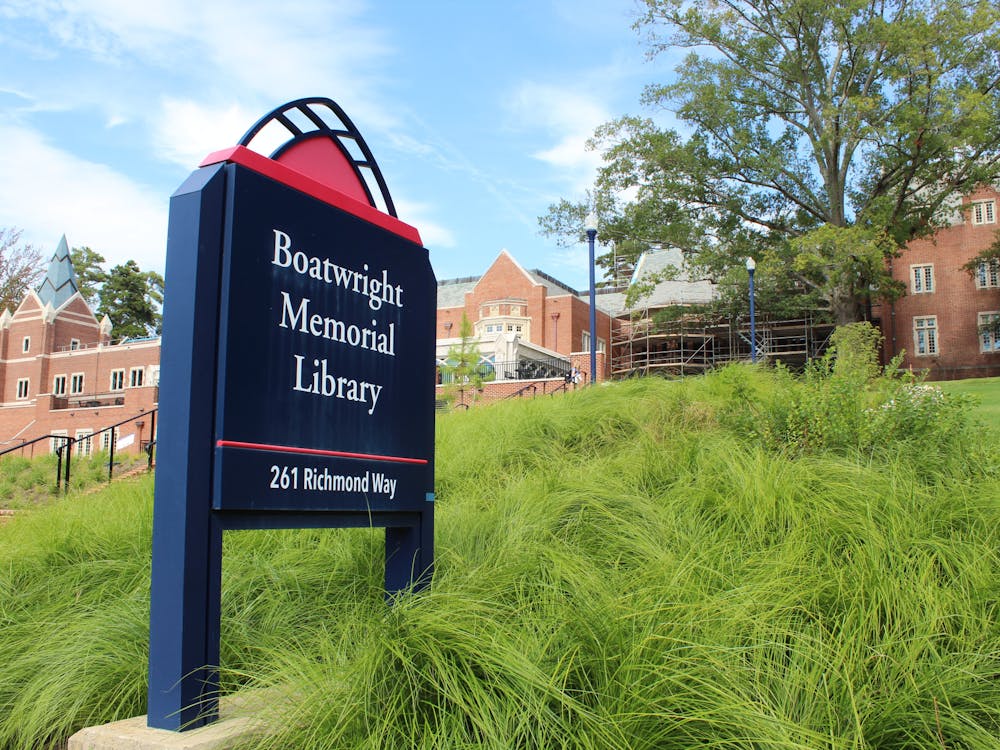Richmond students are fulfilling the Richmond Promise one step - or curb cut - at a time, thanks to the accessibility map that the Introduction to Geographic Information Systems class created last fall.
Accepting the task to increase inclusive diversity, one component of President Edward Ayers' Richmond Promise - the university's Strategic Plan for 2009-2014 - faculty initiated a response to the need for greater handicapped accessibility. Lisa Miles from the office of Common Ground and Kathy Carmody, the learning and development coordinator, approached professor Kim Klinker about mapping out the campus for students who use wheelchairs and scooters.
Klinker, director of the spatial analysis lab, taught an Introduction to GIS class during the fall of 2008. Her class of 14 used handheld GPS devices to map all accessible routes for handicapped students, faculty and campus visitors. On a typical day in the class, students walked around the campus, counted stairs, looked at inaccessible doors, measured the width and slope of paths and took note of curb cuts.
Senior Cloe Franko, who took the GIS class in spring 2009, participated in an exercise to walk across campus using the accessibility map's marked routes. The day of the exercise, a fire drill prevented the students from entering the Tyler Haynes Commons, and the students noticed that there was no alternative wheelchair-accessible route, Franko said.
Last spring, the GIS class sponsored an accessibility awareness day when the class distributed their maps, and students volunteered to use wheelchairs for the day, Klinker said. Heavy rain that day added a challenge to the event, she said. While the class was holding a forum for the event, a teary-eyed mother of a prospective student approached a GIS student and said that her brother, who has multiple sclerosis, would be able to visit her son on this campus, Klinker said.
Facilities checked the map's data, and the office of communications made the map "University of Richmond beautiful," Miles said. Susie Reid, director of operations and maintenance for University Facilities, and Meghan Johnston, project manager of architecture and construction, helped the students revise the map by pointing out discrepancies in their plans. Reid took the class in fall 2008, and Johnston is taking the class this semester to learn the program and to add data.
The admissions office uses GIS technology to plan tours, Klinker said. The Richmond home page has a link to the campus map, accessibility map and parking map, all of which were derived from student data, and show a snapshot version of the accessibility map.
"We built a rocket ship, and right now there's a picture of the rocket ship on the Web page," Klinker said.
Using the GIS technology, clicking on beginning and ending points on the map can identify accessible routes, Klinker said. The GIS class can help plan where facilities should make additional improvements, she said.
The GIS class received input from sophomore Emily Bartle, who uses a scooter.
"Once they had a rough draft, they had me come in and check their data," she said. "What I've gained is that there are 40 more people on campus who understand what it would be like for a person with a disability on this campus."
Additionally, the GIS class consulted junior Buddy Cassidy, who uses a wheelchair, to check their data.
Enjoy what you're reading?
Signup for our newsletter
"During orientation, a map like this would've really helped," Cassidy said.
The faculty first realized a need for greater accessibility when a handicapped female law student came to campus five years ago, Reid said. Jason Blackwell, RC '07, was the first undergraduate student who used a wheelchair, and although he was a history major, he could never take a class in Ryland Hall because of its limited access, Reid said. Since then, changes have been made to make the first floor of Ryland Hall more accessible, she said.
When university coordinators renovate buildings, they bring them up to the Americans with Disabilities Act code by including elevators, ramps and automatic doors, vice president for student development Steve Bisese said. The biggest challenge for handicapped students is visiting academic advisers, he said.
When handicapped students apply to the university, the Richmond and Westhampton college deans meet with representatives from facilities, housing and the registrar's office to plan accommodations for the students, Bisese said.
"We employ the team approach, and I coordinate it," he said.
As a prospective student, Bartle met with faculty to discuss the feasibility of navigating the campus on her scooter.
"They made me so confident that if I said: 'This is a problem. I need your help,' they would do it," Bartle said.
Bartle said she discovered on her college search that no other school put so much effort into helping one person.
Cassidy factored in universities' accessibility when he was applying to college.
"Richmond is going above and beyond the minimum requirement for accessibility," he said.
Bartle agreed, commenting on behavior toward handicapped students: "When you see a person in a wheelchair, you don't just look away. There haven't been any other challenges for me than for any other student who starts college."
Contact reporter Lochrane Smith at lochrane.smith@richmond.edu
Support independent student media
You can make a tax-deductible donation by clicking the button below, which takes you to our secure PayPal account. The page is set up to receive contributions in whatever amount you designate. We look forward to using the money we raise to further our mission of providing honest and accurate information to students, faculty, staff, alumni and others in the general public.
Donate Now


